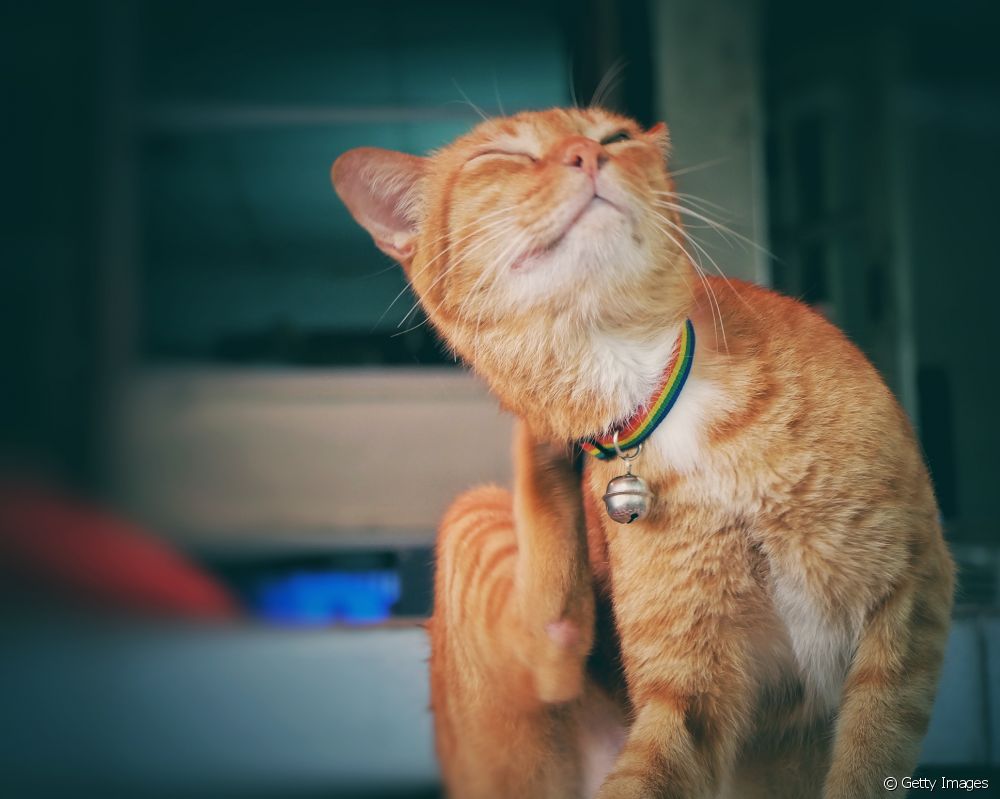Feline mycoplasmosis: vet unravels all about the disease caused by fleas

Table of contents
When it comes to your cat's health, you can't be too careful. Although most pets grow up healthy, we can't ignore the fact that their bodies can also develop several worrying diseases, such as feline mycoplasmosis. The name may seem complicated, but the condition is nothing more than a type of anaemia that can worsen over time. To better understand ithow this disease manifests itself in the body of cats, what are its main symptoms and how is the treatment of feline mycoplasmosis done, the Paws of the House interviewed the veterinarian Matheus Moreira. See what he told us and get all your questions about the disease below!
What is feline mycoplasmosis and how is the disease transmitted?
Mycoplasmosis in cats, also known as feline infectious anemia, is a disease that is not so common. "Mycoplasma is a bacterium that has the potential to cause anemia and other debilitating conditions in domestic cats. However, most of the time it is a subclinical condition, so the feline does not show symptoms that it is infected," explains the veterinarian. Despite this,it is worth noting that feline mycoplasma can manifest itself in a more acute form, causing anemia that varies from mild to severe. When this occurs, the symptoms are clearer that something is not going well with the pet's health.
Regarding the transmission of the disease, Matheus clarifies: "It can occur through wounds caused by bites, blood transfusion and transplacental. However, the most common form is vectored by hematophagous arthropods, with the flea as the main vector." Precisely for this reason, special care must be taken with possible infestations of fleas and ticks and with bites during cat fights(especially in the case of felines who are not neutered and leave the house frequently).
Some people may even wonder if feline mycoplasmosis passes to humans, but only felines suffer from this infection. Moreover, another important observation made by the veterinarian is that animals infected with retroviruses (FIV/FELV) are more predisposed to develop and demonstrate clinical signs.
7 symptoms of mycoplasmosis in cats to watch out for
Most cats do not usually show clinical symptoms that they have feline mycoplasmosis, and there is no need for treatment. "In these cases, mycoplasma is usually only detected in routine examinations," says Matheus. However, as the disease begins to manifest and worsen, some signs may be noticed, such as:
- Anemia
See_also: Labradoodle: everything you need to know about the Labrador-Poodle mix- Lack of appetite
- Weight loss
- Pale mucous membranes
- Depression
- Enlarged spleen
- Jaundice (only in some cases, characterized by yellowing of the mucous membranes)

Mycoplasma in cats: how is the diagnosis made?
"We have two diagnostic methods for mycoplasma in cats: the first one is the blood smear that is made by collecting blood from the ear tip, but it is little used due to low sensitivity. Secondly, we also have the PCR technique, which is the most used and most reliable to detect the pathogen in the cat ", reveals the doctor. Therefore, it is very important to look for the right doctor.help from a qualified and trusted professional whenever there is something wrong with your kitten's health. This is the safest and most efficient way to get the correct diagnosis and then start the most appropriate treatment for each case (if there is a need for it). Although feline mycoplasmosis is not always symptomatic, routine consultations can help identifyany kind of abnormality in the animal.
Curing feline mycoplasmosis is only possible with proper treatment
Fortunately, feline mycoplasmosis is curable if treated correctly, according to Matheus: "It is possible to achieve a clinical cure for the disease. Treatment is done using antibiotics and supportive medications, which will be indicated according to the symptoms presented." Depending on the severity of the condition, the specialist points out that it may be necessary to perform a blood transfusion.
It is also worth noting that, although the recurrence of this disease is not very common, it can occur. In any case, it is important not to give in to the temptations to self-medicate your pet, as this can end up being harmful to the animal's health. Always seek the help of someone qualified, even if your pet has already experienced this problem before.
Is it possible to prevent feline mycoplasmosis?
It is entirely possible to take some preventive measures when it comes to feline mycoplasmosis! As the main vector of this disease is the flea, then the best way to prevent your four-legged friend from being infected is to ward off any possibility of parasite infestation. The use of flea collars can be quite useful, as well as frequent cleaning of the environment in which the cat lives.Cat neutering is another measure that ends up helping to prevent feline mycoplasmosis (and several other diseases as well), since the cat decreases escape attempts and, consequently, the possibility of fights with other felines on the street.
See_also: How to teach the cat not to climb on the table? See step by step!

